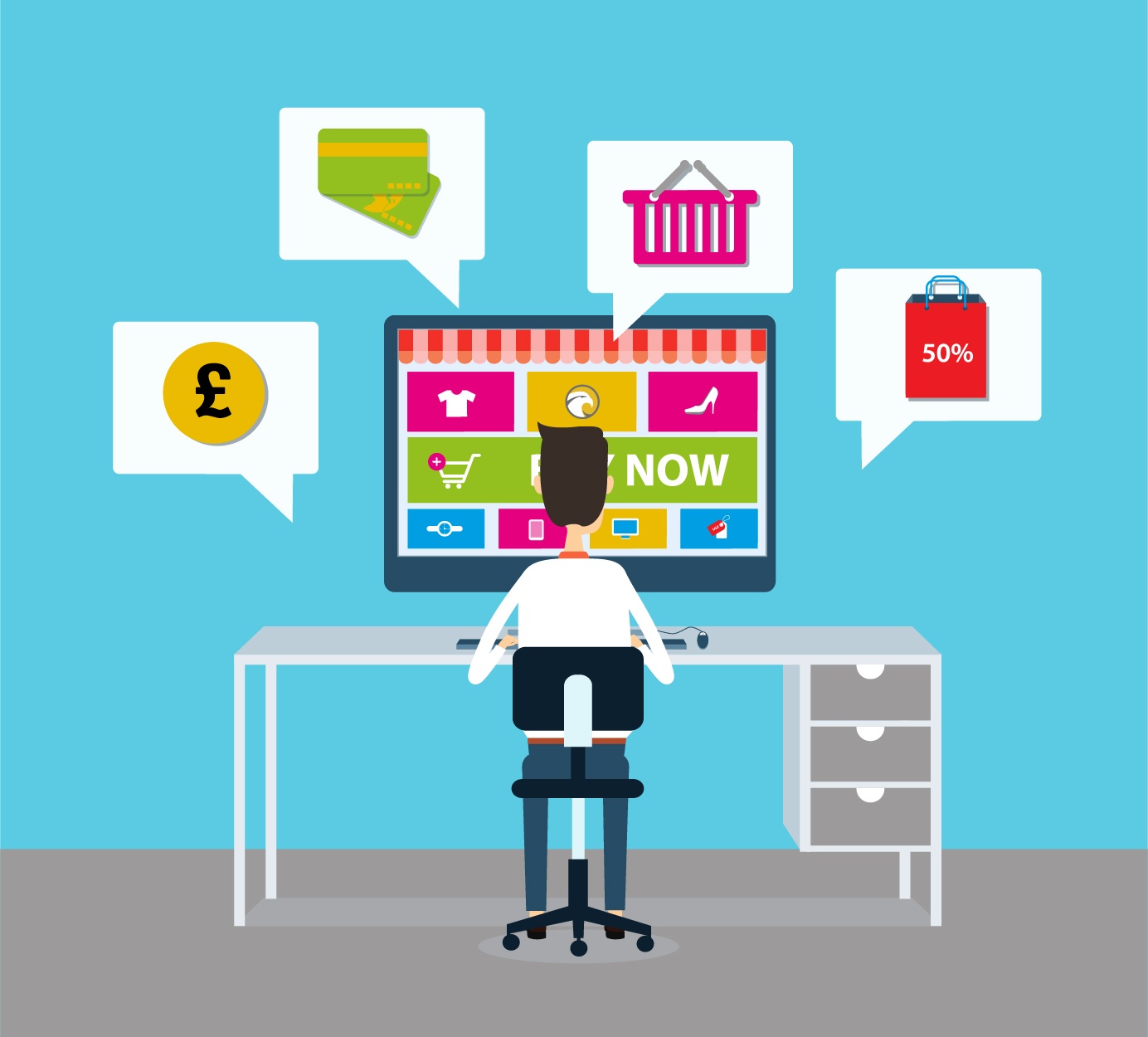11 Mar

As business owners, we inherently understand that more clients mean more business – it’s simple. Hence, you strive hard to attract new buyers and whilst hoping that you manage to retain existing ones.
You’ve all heard the saying: What gets measured gets managed. Well, using certain Key Performance Indicators (KPIs), you can measure your company’s success in terms of the customer experience you are providing for your customers.
Customer Satisfaction Metrics like NPS (Net Promoter Score), CES (Customer Effort Score) and CSAT (Customer Satisfaction) are three of the most widely used measurements to get a gauge on the level of customer experience being received by your customers.
In this short 10 min read, we will unfold the fundamentals around Customer Satisfaction Metrics. We will explain what they are, why they are important and of course how to calculate these scores for your own business!
What is Customer Satisfaction?
Before we begin our discussion about Customer Satisfaction Metrics, we must all be clear in our minds, what Customer Satisfaction entails. Customers go through an entire process of interacting with your brand before aside from the act of purchasing from you. Customer Experience (CX) is a broad term that incorporates all elements of interactions and experiences in a customer journey between your brand and the end consumer.
Based on the sum of individual interactions your brand delivers to its end users, your customers will formulate a view on the level of Customer Experience received. Customer satisfaction is the level of happiness a customer feels while having a buying experience with you. From the beginning!
Why Track Customer Satisfaction?
Great, I get what Customer Satisfaction is, but why should I measure it? Well, there are many reasons to measure and track Customer Satisfaction – let’s take a deeper look.
1. To compete with other companies
Small businesses look up to big companies like Apple and Netflix for inspiration. Only a few of them know what these top-notch companies really did to reach the heights they are in today.
At the time Apple launched, they did not introduce any high-tech gadgets. Instead, they started in a simple way. They used customer satisfaction as a way to differentiate themselves from competitors. Nothing was ever too much hassle for them. If their customers wanted it, they would deliver.
Apple collected feedback religiously from its customers and listened to them keenly. It used this feedback to shape their offering further, allowing their customers to fall in love with their brand.
To date, Apple still asks its users to give feedback and help them improve. Using short surveys, Apple asks users to rate their experience and tell them what would make their experience better.
As a result, its customer satisfaction score is significantly higher than that of its key competitor Samsung.
2. Attract and Retain Customers
Customers are the heart of every business. Businesses struggle severely and even go bankrupt if they begin to lose their customers too often without addressing the root issue.
Customers are very likely to be retained when you exceed their expectations. Sending out regular Customer Satisfaction Surveys is the best way to know what your customers want and expect from their experience with you.
When you provide “WOW Moments” to customers, they begin to develop a truly long-lasting impression of your brand and develop feelings of trust towards you. Consequently, a one-time buyer often gets converted to a long-term loyal customer who is eager to refer their friends across!
The Temkin Group found out that a correlation exists between CX and trust, as well as consumers’ willingness to recommend a brand.
Good experiences get shared like wild-fire. Everybody likes to share an exciting moment with their friends and family members. Positive word-of-mouth marketing is what drives in referrals and attracts new buyers.
3. To Increase Revenue Streams
According to the Temkin Group, even a slight increase in CX generates an average revenue increase of $823 million over three years for a company with $1 billion in revenues annually.
Using customer satisfaction metrics helps you have an idea of who your happy customers are. Providing customised offers to them increases the likelihood of repeat buying and increasing positive revenue streams.
As a bonus, happy customers tend to spend more with a brand! Customer Satisfaction surveys inculcate a sense of trust among the buyers. When you conduct a survey, you indirectly assure the customers that their opinion matters to you.
The fact that surveys let people feel ‘valued’ and ‘heard’ increases the chances of them getting loyal and repeating business with you.
KEY TIP: It is not enough to just send out a survey! This could, in fact, have a negative impact if you forget to ‘close the feedback loop’. More reading on that here.
How to Measure Customer Satisfaction?
1. Target the right Customer Segment
Finding the correct people to participate in the survey is crucial for getting rational and valid results. You don’t want to be led down a rabbit hole of non-representative feedback! Direct customers, as in the case of restaurants and patients of healthcare centres, are pretty much the obvious candidates to participate in surveys.
But what about other cases where the customer buys you through a channel? E.g. If you sell cereal, you do that through wholesalers and retailers. You do not interact directly with your customers and do not know whom to target for conducting surveys. In that case, using electronic and social media channels is the best way to build a list of customers with emails and contact numbers.
Run campaigns and encourage consumers to provide you with their emails in exchange for some discount coupons or lucky draw prizes. When you get in touch with your direct consumers, then it is the best time to ask about their experience with your brand and ways you can improve it for them. The key is to reach the end consumer of your product – the ones who should be receiving the full benefit of your product or service.
2. What to Measure?
In a customer satisfaction survey, you ask customers a few questions related to the performance of your company and how you can improve it further. Different types of surveys have different kinds of questions, but they all are based around one thing “CX – Customer Experience”.
While some surveys are detailed, others are concise. It depends on the nature of your business and the type of feedback you want. Should you be collecting NPS? CSAT? CES? We will discuss this topic more further into this guide.
3. Determine the Survey Medium
There are mainly three mediums through which companies collect feedback and conduct surveys.
Online/Message/SMS
Online is a low cost and easy to scale medium of a survey that can be conducted via email or a weblink. It is highly convenient to respondents as they can complete it at a time when they feel comfortable and without pressure or bias.
One important factor to note is that online surveys are only as successful as the customer data you collect. Having incorrect email addresses or Mobile Numbers can affect the amount of data you end up collecting.
Telephone
Telephonic surveys are conducted by many B2B companies who keep in touch with their consumer base. While telephone surveys are becoming outdated, they are still very effective in getting a few responses but very detailed in nature. This medium should be used if you want to gather more meaningful deep feedback as opposed to vast amounts of feedback. However, people nowadays get annoyed by receiving calls at odd times, and most would refuse to participate in a survey, so it is a numbers game.
In-store
Conducting in-store surveys is the best way to get immediate feedback at high volumes. Also, since the experience with a customer is still fresh, the responses have higher validity. If you see customers having some queries, you can solve it right away and make them happy by providing a WOW Moment immediately. Collecting feedback in-store however, has to be caveated by the notion of bias. Some studies show that asking customers for feedback in-store can lead to bias.
4. Now Measure Satisfaction!
Using the scores, measure the average level of customer satisfaction and use the data to see where your company stands currently. Then work doesn’t end here. Your main goal is to improve customer service to keep your customers happy. Customers should be able to notice that the experience is getting better with each visit – not worse!
Make actionable plans and come up with better strategies to take feedback on-board and improve customer service. Take note of all customer touchpoints and the loopholes present to eradicate them as soon as possible. This is called 360 Customer Experience – you can read more here.
Related Reading: How to provide a 360 Customer Experience?
In the following section, we will discuss the five main Customer Satisfaction Metrics, the ways they are measured and each of their benefits.
Customer Satisfaction Metrics
The key customer satisfaction metrics to be aware of and which should form part of your CX strategy include:
NPS
NPS stands for Net Promoter Score. Companies use this metric to see how many of their customers are willing to recommend them to others. It is one of the most widely-used customer satisfaction metrics across companies worldwide.
It is considered the Ultimate Question is all of retail.
NPS survey is based on a single question and the answer is selected from a scale of 0-10 where 0 means very unlikely, and 10 means very likely.

When the responses are gathered, they are categorized based on scores.
0-6: Detractors
7-8: Passives
9-10: Promoters
Detractors are those customers who are unhappy with you. Instead of promoting you, they will discourage others from doing business with you. It is crucial to see who is a detractor so that you can offer a kind of compensation or do something to satisfy them.
Passives are such unenthusiastic individuals who score you 7-8 but are unlikely to bring in referrals. We ignore them in our NPS calculations.
Promoters are the primary referral drivers of a company. They advocate your brand and whole-heartedly recommend others to try you.
NPS is calculated by subtracting the percentage of detractors from the percentage of promoters. You get your answer in a whole number form within the range -100 to +100.
Any score above 0 is considered to be a good score but companies tend to benchmark their scores.
Not sure how to calculate your NPS score? Not to worry check out our Free NPS Calculator
CSAT
CSAT stands for Customer Satisfaction Score. It is collected at a single point of interaction, not on the entire experience like NPS. Just like NPS however, it is also a rating based question. The question is customized for each type of customer interaction.
E.g. Whatsapp asks you to rate the quality of your call after almost every call you make.
The scale to measure CSAT is totally up to you. We just saw that Whatsapp uses a 5-star scale, But Netflix uses a 3-star scale to calculate its CSAT.
CSAT is measured by dividing the number of positive responses by the total number of responses. The answer you get is multiplied by 100 to get a percentage.
CSAT gives you a direct indication of how much of your customers are satisfied with your service. It is easy to collect and easy to analyze. However, measuring CSAT should be a continuous process. Calculate it for multiple types of interactions and for different target segments to have clarity in results and decision making.
CES
CES stands for Customer Effort Score. It calculates the effort your customers put in while interacting with your brand.
Here’s an example of a CES survey. The score is collected on a scale of 5, but they have used emoticons in place of numerics to make the survey look lively and interactive.

Your goal should be to make it as easy as possible for customers to interact with your company at each touchpoint. CES indicates the level of difficulty your customers face while engaging in a task with your company. Hence, lower scores of CES are preferred, which shows your customers found it easy to interact with you.
CES is calculated by dividing the sum of all CES scores by the total number of responses. The final score is in the range of 1-5.

Churn Rate
The last but not the least in the count of customer satisfaction metrics is the Churn Rate.
Churn Rate is the measure of customers who stop buying from you. Of course, no company would want its customers to turn their backs on them, but many incidents can cause customers to churn away.
Churn Rate allows you to keep this in check and unpack any underlying issues that may be leading to high levels of customer churn. Churn Rate is calculated by dividing the number of lost customers by the total number of customers you had at the start of a period. The answer is multiplied by 100 to get a percentage.

Out of many possibilities, having an unsatisfactory customer experience could be a very significant reason for customers to not return to you. Here are some useful tips to consider for reducing Churn Rate.
Want to get an idea of how much Churn could be costing your business? Have a play with our Free Churn Rate Calculator here.
Best Practices in Using Customer Satisfaction Metrics
Before we leave you to begin on your journey of delivering exceptional CX to your customers, we want to leave you with a few key best practice tips to help you get a running start.
Benchmark your success
Benchmarking your success against the big fish in the market is a good way to know where you stand and what your direction should be. It also helps you analyze your performance over time and an idea of how fruitful your efforts are. A quick google search allows you to see where your competitors are ranking for various CX Measures.
If you’re measuring NPS, feel free to have a play around with our Benchmarking tool here to get an idea of where you stand amongst household names.
Develop an Action Plan
As mentioned earlier, simply conducting a survey and being done with it, is not enough. Using the results, however, to make informed improvements is the ultimate goal. Once you know your scores, it’s time to get in action.
Here are a few recommendations that you can use to develop an action plan to ramp up your CX!
- Look at the survey data to see scores relative to the competition
- Pay particular attention to issues that are important to customers
- See how the satisfaction scores vary across different types of customer segments
- List the issues that need to be addressed
- Schedule tasks and assign people to them
- Create work breakdown structures (WBS)
- Start improving on suggested areas
- Review progress and see if it is working positively for customers or not – i.e. are you still seeing the same complaints come in?
- Start over again and repeat.
Related Reading: 360 Customer Experience
Ways Technology Can Help
Sound like a lot of work? Automated customer feedback systems like GroHawk can help you conduct surveys and collect feedback from customers without you having to waste days and weeks of valuable team members’ time. These systems are efficient, cost-effective and easy to scale-up. You will no longer find yourself trawling through spreadsheets trying to make sense of old data which is produced months too late.
Want some help building out your CX strategy and measuring process? Book a demo here to speak with one of our experts.









